It is nine o’clock on a Thursday morning at the end of April, and Stef Ferrari is showing me around her soon-to-open ice cream factory, Hay Rosie. In the production room, two men are busy installing pump lines. Every few minutes, our conversation pauses for the passers-by who peek through the window; Stef opens the door and introduces herself to each one in turn. Each walks away eager, a smile on their face.
When I met Stef four months ago, in rural Pennsylvania in the dead of winter, Hay Rosie was more a concept than a physical reality. We were there to attend Penn State’s ice cream short course, then in its 122nd year. We stayed up late to study organic chemistry, physics, microbiology—a whole host of generally unsexy subjects one does not usually connect to the ice cream in their freezer.
I learned that Stef came from a craft beer background, and that we lived in the same neighborhood of Brooklyn. It was a delight to meet someone who geeked out about ice cream flavors as much as I did, and who, above all, would be happy to eat ice cream with every meal for the rest of her life. I was also struck right away by her seriousness of purpose—it was clear she intended to master the science and take no short cuts, so that her ice cream would be the best it could possibly be. This is all to say, I liked her from the start.
In the time since, I have watched Stef turn Hay Rosie into a real life, solid reality. Her ice cream is crazy delicious. (And I am an insufferable ice cream snob, so please trust me when I tell you—the ice cream is crazy delicious.) Stef balances the tricky science of making from-scratch ice cream with huge wells of resolve, creativity, passion, and curiosity. It is my belief that Stef’s obsessive quest to perfect her flavors, coupled with her focus on building community, will make Hay Rosie the success it deserves to be.
On the cusp of opening Hay Rosie, I sat down to talk with Stef.

Why ice cream? What does it mean to you personally?
Ice cream was a no-brainer for me in many ways. I’ve been totally obsessed with it for as long as I can remember. It’s always been my favorite treat—any time of day, any time of year. Growing up, it was something special to share with my mother—we caught up and always had our best conversations—big or small—over cones or sundaes. [The company is named for Ferrari’s mother, Rosie.] And that’s the thing about ice cream—it’s an experience. People seldom whip up ice cream at home, so it becomes an opportunity for a shared experience with those you care about. I love that.
I always said I would make ice cream my retirement plan. It was for “someday, someday.” But then it hit me—what was I waiting for?
You’ve had an interesting career path—can you talk about how your past occupations made an ice cream business a natural next step?
My background is in craft beer. I worked for The Bruery (an amazing small production brewery in Southern California), and then for the Cicerone Program (the beer version of a wine sommelier) as an exam proctor. Then I wrote a book about beer, and during that time, I started thinking seriously about going into business for myself. I knew I could apply the lessons I learned while working with these small, specialty producers.
I considered opening a brewery or brewpub here in Brooklyn, but it never felt exactly right. When I realized my heart was in ice cream, I basically just repurposed my business plan—I love, and wanted to leverage, the craft brewery business model: keep the focus on quality, education, and collaboration. In my experience, the craft beer business was never just about the beer—it centered on knowledgeable producers, sharing and elevating food and beverage experiences with others. I think that craft ice cream shares those principles. And I have found ways to incorporate the craft beer model into my ice cream business anyway.
For example, we have established the kind of membership-based “Futures” club common among craft breweries. Folks can join early in the season, and then have access to certain perks, like limited runs or exclusive flavors. We call our program the Cowbell Collective. The club caters to “serious” ice cream lovers who are up to try more outlandish flavors, or who want first access to special flavor runs. Members also receive benefits like discounts at our Tasting Room. I’m hoping to have the club in full swing by mid-summer.
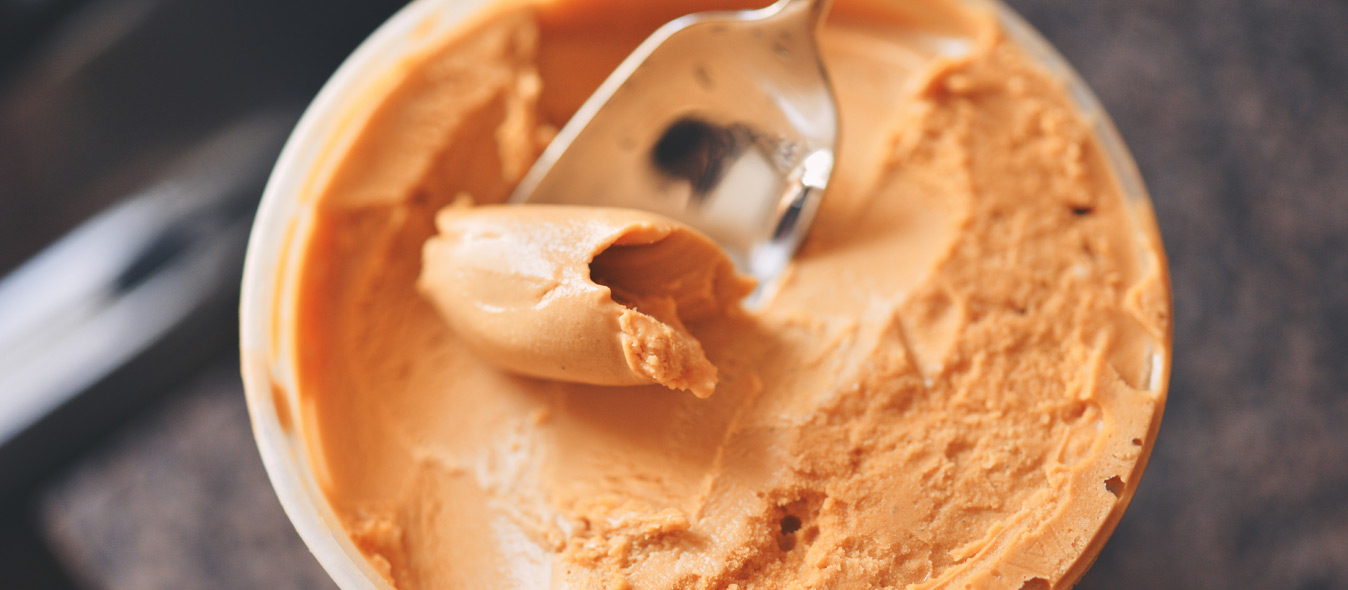
Can you talk more about what you mean by “elevating” ice cream? Words like “craft” and “artisanal” get thrown around a lot these days in terms of food marketing; what sets your ice cream apart? What makes it truly a high-quality product?
Ice cream is a super complex science—I think people might not realize how much chemistry goes into each cone! Drawing on my craft beer background, I wanted to make sure I really understood the science of ice cream before jumping in with both feet. That was something we took really seriously at The Bruery—we had a production facility, but also an in-house lab for testing and analysis. I saw that the only way to control an outcome was to have a full grasp of the fundamentals. In this spirit, I read a ton of books on ice cream, dairy, and food sciences in general, and then I experimented constantly. I also attended the historic Penn State Ice Cream Short Course, a super-intense educational program that attracts people from all over the world. It was amazing. I even got to watch a cow give birth!
I realized early on that, in order to have the kind of product control I wanted, we were going to have to pasteurize in-house. (The vast majority of ice cream producers buy a pre-mixed and pasteurized base.) That meant more equipment, more learning, and more starting capital. But it was really important to me to make each flavor from scratch. Nationwide, this is a rare practice. I was told over and over again from equipment suppliers and ice cream professionals that this was a bad idea—it wasn’t doable, it wasn’t practical. One actually said to me, “Why would you do this? No one cares where your milk or sugar comes from.” Well, I cared! And I am lucky to live in a place where many folks take food as seriously as I do. (Ferrari worked with a company called MicroDairy Designs to have a specialized pasteurizer built for the business. Technically, she is considered a NY-State dairy processor.)
So what does in-house pasteurization actually achieve?
In-house pasteurizing gives us the ability to create truly custom bases for flavors when necessary. For example, we can dial back sugar levels if we are making a caramel base, or modify the level of butterfat if we are adding butter.
If we’re making Black Raspberry with Honey and Chocolate Chips, I don’t want that beautiful fresh raspberry flavor masked by tons of sweetness, or the floral notes of the honey to have to compete with the sucrose that just happens to come standard in the base. If we made our Cinnamon Chocolate ice cream with the same level of starch as we do our vanilla base, you’d need a knife to get through it. To maintain the texture of that ice cream, we would have to cut back the chocolate and cocoa, losing a lot of flavor intensity in the process. That would break my ice cream-obsessed heart!
But because we control the base, we can adjust the formula with individual ingredients in mind to achieve maximum flavor potential. In the end, the goal is for each ice cream to have the most intense flavor possible, the best texture, and to let individual ingredients shine through, while creating ice creams that are consistent from flavor to flavor.
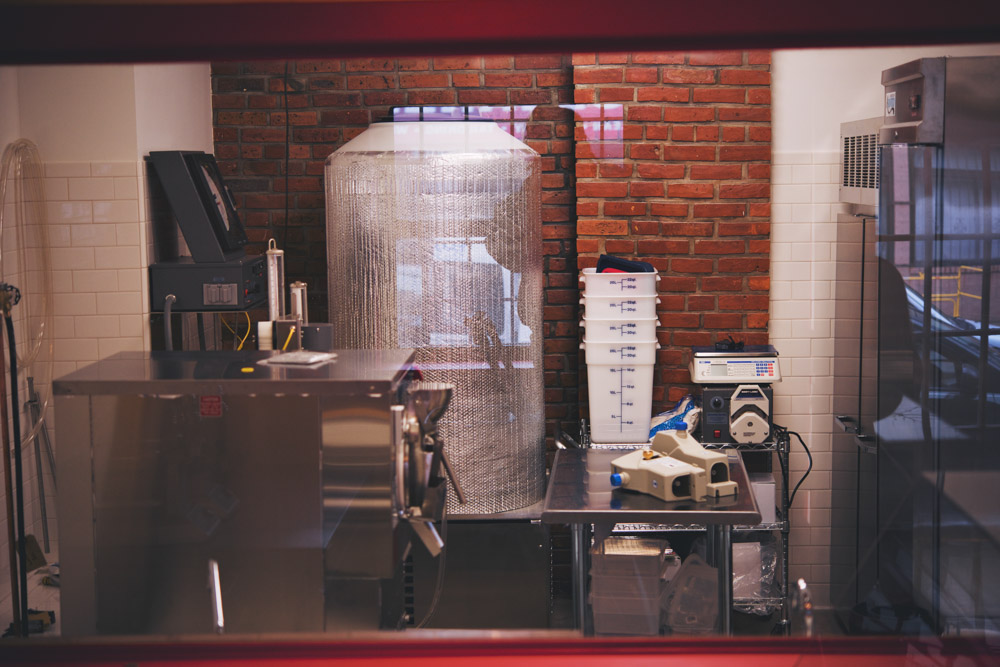
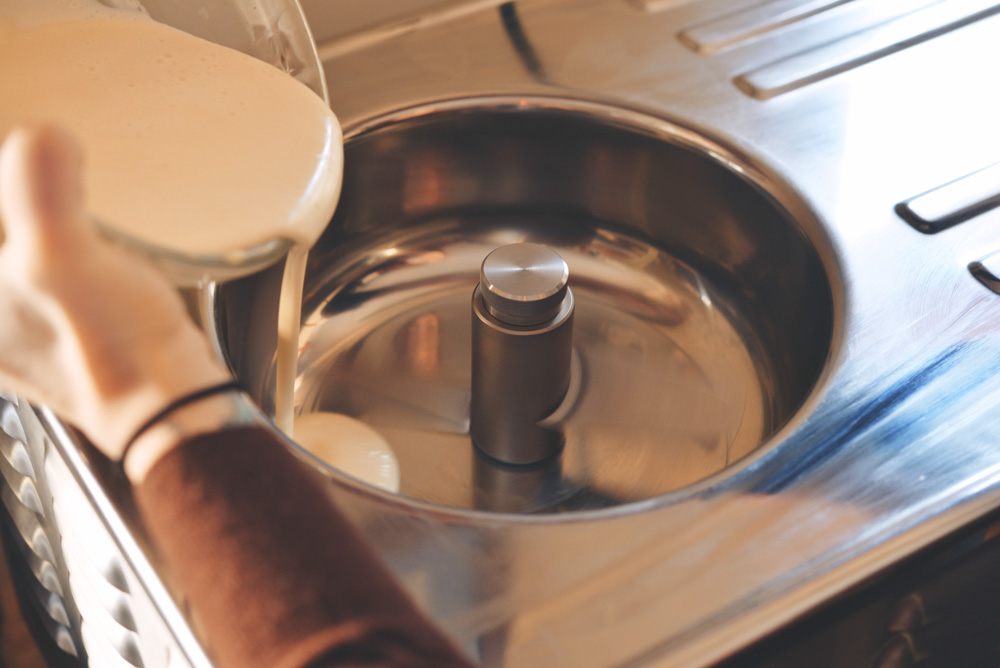
From a creative perspective, what makes ice cream so fun to work with?
Ice cream is a totally blank canvas, and there are endless ways to experiment. I mean, what doesn’t go well with cream? While I am a huge fan of classic, comforting flavors like Chocolate Chip Cookie Dough, Peanut Butter Cup, and good old-fashioned Vanilla, those flavors are really just the beginning.
It is easy to step outside the cannon of classic flavors. Think about all the cream sauces we pair with pastas and proteins, or creamy salad dressings; the possibilities are so vast, it leaves a lot of room for inspiration. For example, we make a Cacio e Pepe ice cream that was inspired by a few days I spent in Rome last year when we ate almost nothing but. Back at home, I created a Pecorino-Grana Padano base, and then folded in freshly cracked black pepper. I know it sounds strange, but it’s so delicious with crackers, or on top of toasted crostini for a little hot-cold, crunchy-creamy action. Ice cream doesn’t always have to be dessert—we can top fish tacos with cilantro lime ice cream. Or, finish a salad with a scoop of cool, creamy blue cheese ice cream that dresses the salad as it melts. Really, I would incorporate ice cream into every course if I could!
It sounds like inspiration is not a struggle!
Inspiration comes from all over the place! I’m such a food geek. Whenever I taste something amazing, my first instinct (after giving myself a few bites to just be in awe of whatever it is) is to think about how it would work in ice cream. I had some incredible barbecue recently, and I thought, “How would this work in ice cream?”
It isn’t always literal, of course. In the case of the barbecue, I thought about flavor, spice, smoke, and sweetness. I will break foods down into component parts. My work in craft beer was enormously helpful in this respect—since I was trained in food pairing, I learned how ingredients could interact across the food and beverage spectrum. Travel is also huge for inspiration, as well as living in different regions.
Without a doubt though, when it comes to ice cream, my sweet tooth guides the way. I like to experiment, while never abandoning what I’ve loved about ice cream my whole life—all the sweet, comforting, and nostalgic aspects. How many times have we seen the ubiquitous sitcom character get dumped and head straight for the Ben & Jerry’s? Or the winning tee-ball team hit a Dairy Queen to celebrate? Ice cream is truly the ultimate comfort food.

How important are ingredients to you? What is your philosophy where sourcing is concerned?
Very. Sourcing locally is super important to me, for three main reasons. First: quality. Dairy and produce are highly perishable, and it’s best for them to travel as little as possible. Hay Rosie is located in New York State, which has an incredibly robust agricultural industry, particularly in dairy. Why would we go anywhere else?!
Also, supporting other small businesses happens to be an integral part of my personal philosophy—my mother is a small business owner, as are many of my friends. My extensive work with small breweries, restaurants, bars, and food producers has shown me how much love and care goes into a making a small business run. These are people who give a damn. They work hard, and they deserve appreciation and support.
Finally, sourcing locally just makes good business sense. Ingredients don’t have to travel as far, and I am able to form relationships with producers. I find the more I can work together and directly communicate with a supplier, the better the quality control tends to be.
When I cannot buy ingredients locally, I look for businesses/suppliers that have strong social practices, treat their workers fairly, and share our philosophy overall when it comes to quality. I find most times that those things naturally go hand-in-hand.
My extensive work with small breweries, restaurants, bars, and food producers has shown me how much love and care goes into a making a small business run. These are people who give a damn.
Is that spirit of the local business part of why you chose to open in Brooklyn? Do you feel like you are a part of a community? How do you plan to give back to that same community?
Brooklyn is definitely my home and I really couldn’t imagine opening anywhere else. I am constantly astounded by the support for local businesses in our neighborhood, and I feel lucky to live (and now to operate my own business) in a place where people prioritize quality food business in particular.
As far as giving back, I decided early on to build a charitable component right into my business plan. Every month, we will make a donation to a different charity or cause. We just consider it a cost of doing business—non-negotiable.
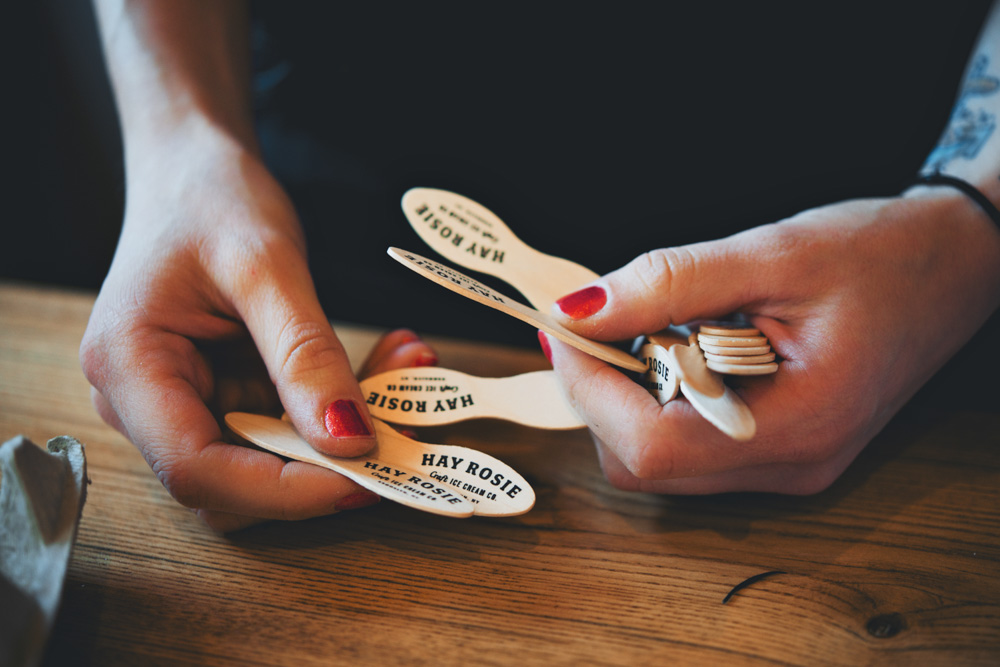
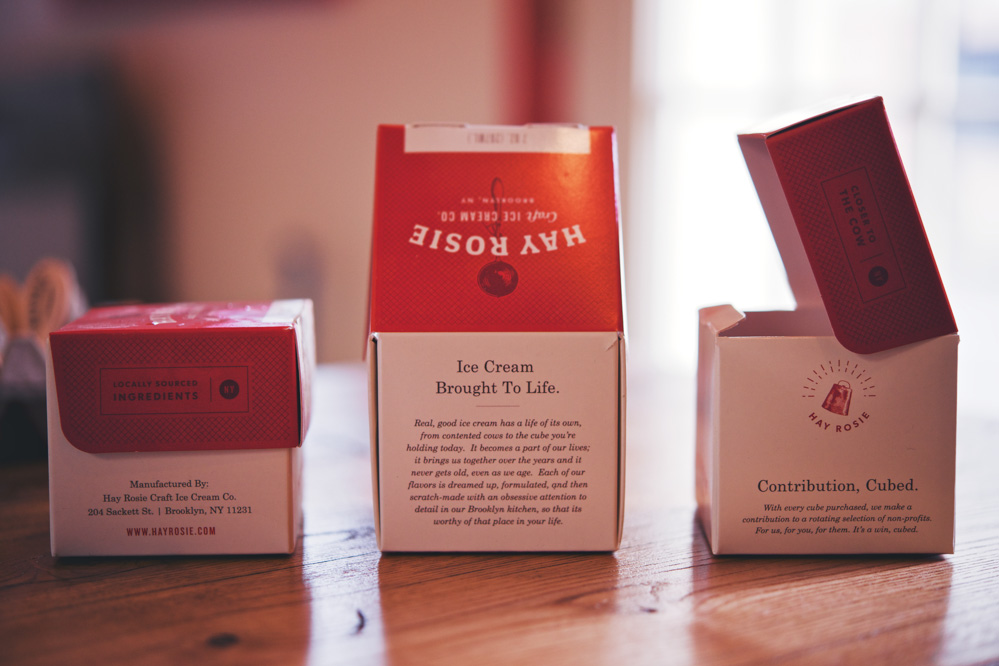
You are opening the business with a distribution model, although your Tasting Room will be open several days per week for customers to come in and enjoy ice cream in person. What are your goals for the company in general?
Right now, my goal for the company is to get the doors open! Once we are fully operational and when I have time to daydream, we will have some grand plans for our future. But at this stage of the game, I’m focusing on one thing at a time. Starting a business can be really, really daunting and intimidating! We have a motto in my house: Eyes on the Cone. That’s what I’m thinking about every day, one small victory at a time.
But big picture, I want to give customers quality ice cream that brings a little something extra to their lives. We’ll handle all the science and technical stuff so that when you open up a pint and take a bite, you can enjoy it and share it with the people you love. That’s what ice cream has always been about for me—sharing something I really love with the people I really love. As complicated as ice cream itself can be, the enjoyment should be totally simple.
What about for the Tasting Room space specifically? What are your goals and hopes?
Since the business is primarily production and distribution (much like a brewery), I wanted there to be a physical place for people to gather and to try our ice cream. One of my favorite aspects about beer was the ability to visit the place where the magic was happening.
Brewery tasting rooms allow people to visit the facility, to ask questions, and to check out the equipment. I can’t tell you how many times I served someone a beer at the brewery—fresh as can be—who then looked around and told me, “Wow, I had no idea all of this went into beer making.” I could just tell that they’d remember that experience the next time they ordered a pint. In fact, many came back weeks later to tell me how they’d started home brewing because they were so inspired by their visit.
Folks really got to connect with us; rather than just picking up a bottle from a shelf, here they could speak with a brewer, ask questions, discuss what they liked. On our end, we were getting feedback in real time. We piloted batches, asked people what they thought, and what they wanted to see—imagine how much better we understood our customers’ reaction to a new product. We could tinker with our creations before we shipped out massive batches.
These days, far more people are into active consumption. More than even reading a label, customers want to know where their food is coming from, and how it got there. A Tasting Room seemed like a natural step, both for me to serve my customers better and to pilot new flavors, and for the customers to get a sense of transparency and education about the product. Plus, it will just be fun!
Finally—and very importantly—where can we eat Hay Rosie ice cream?
In addition to the Tasting Room in Carroll Gardens, Brooklyn, we’ll distribute to grocers in New York State to start. Hopefully, we will expand elsewhere soon. We will also ship directly to your home, anywhere in the country!
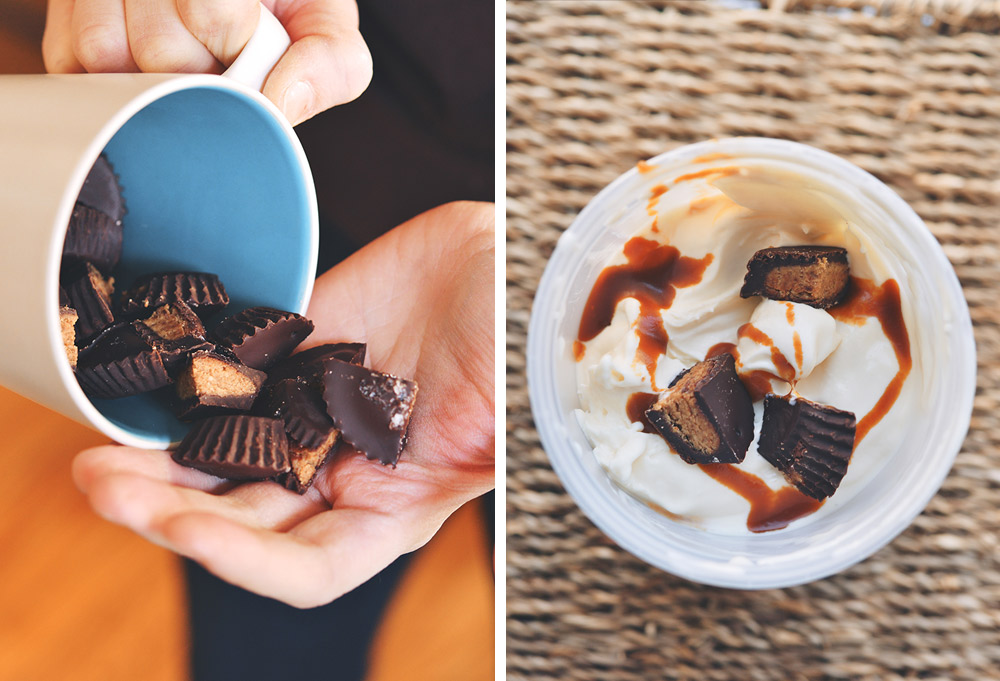
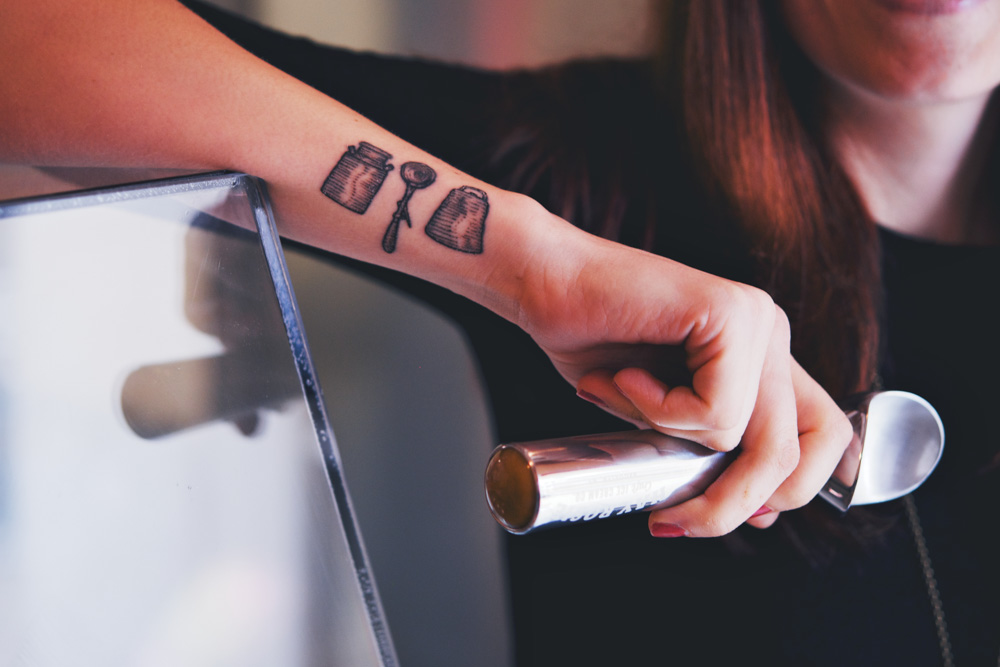
—
Hay Rosie is located at 204 Sackett Street in Brooklyn. You can find Hay Rosie online on their website, or on Instagram or Facebook. Check out their videos for more insight into the process.







Our comments section is for members only.
Join today to gain exclusive access.